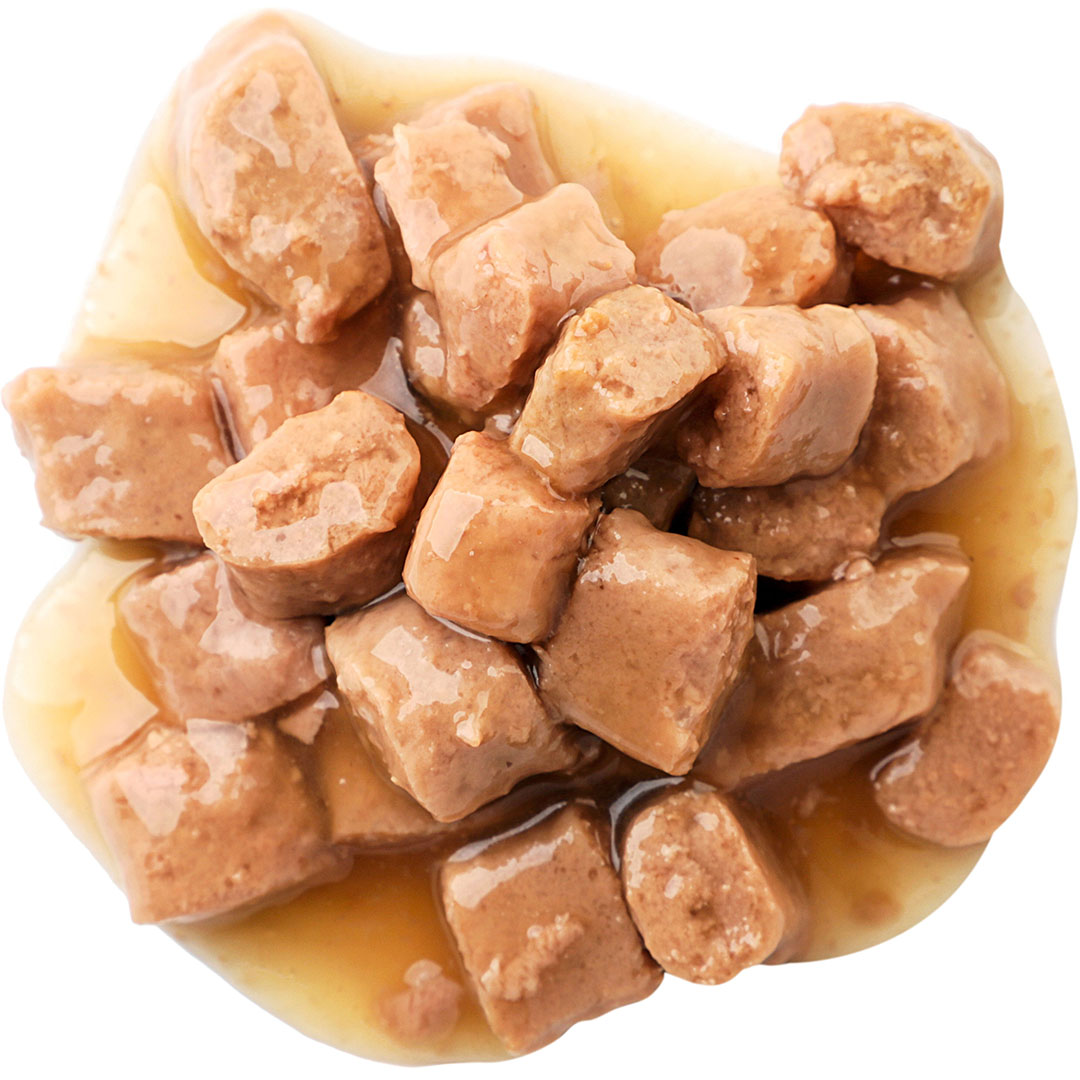Nutritional value of poultry by-products in Beagle dog food

The use of animal by-products in pet food is gaining interest. Researchers therefore evaluated the effects of different particle sizes of poultry by-product meal in Beagle dog food on nutrient digestibility and faecal characteristics.
The nutrient digestibility of diets based on animal by-products should be well assessed. However, there is little information available on the impact of raw material particle size of animal by-products fed to domestic dogs as a complete diet. This was the focus of a recent study.
In animal feeds and pet food, meat industry by-products are commonly used as a source of high-quality protein. Among all rendered protein sources, poultry carcasses and neck meals are frequently used as ingredients in commercial pet foods due to their valuable amino acid and fatty acid profiles and the absence of a negative impact on diet palatability. Nonetheless, it is unclear how poultry by-product meal affects companion animals regarding diet digestibility and faecal quality when used in varying particle sizes.
Animal by-products often include optimal levels of amino acids and proteins. However, the nutritive value of these by-products varies greatly between sources, which might be related to various factors, such as particle size, dietary inclusion levels, composition and bioavailability, and processing. In accordance with the regulations of the European Commission, the animal by-products that may be used as raw materials for pet food include products from poultry farming, among others.
To move towards a sustainable future, by-products of animal origin must be handled using methods that are harmless, environmentally responsible, and efficient in terms of recovering valuable resources. This leads to animal by-products being produced during the rendering process, which includes heat treatment to render products free of pathogenic microorganisms before subsequent use in animal diets. Moreover, it should also be addressed that using animal by-products in the pet food industry encourages sustainable animal production, allowing animal protein to be recycled, thus reducing its environmental impact.

Beagle dog diets
In this study, researchers evaluated the nutritional value of a poultry by-product measured in terms of nutrient digestibility and the characteristics of faeces in dogs.
– 6 healthy intact Beagle dogs between the ages of 6 and 10 were used.
The broiler carcasses used in the study contained parts of the deep breast muscles and neck, as well as wingtips, poultry fat, and the skull. The carcasses were prepared and milled in 3 different degrees of grinding (coarse, fine, and very fine), providing 3 dietary treatment groups with different particle sizes as follows:
- Coarse diet: >1 mm (45.2%), 0.2–1 mm (3.3%), <0.2 mm (51.5%)
- Fine diet: >1 mm (8.8%), 0.2–1 mm (8.9%), <0.2 mm (82.3%)
- Very fine diet: >1.00 mm (6.6%), 0.2–1 mm (7.3%), <0.2 mm (86.1%)
Nutrient digestibility
The assessment of food intake showed high acceptance of the poultry by-product diets with no significant differences between the coarse and the finely ground diets. Likewise, the nutrient digestibility of poultry by-product meal had high values, with no significant differences in the apparent digestibility of nutrients. Organic matter digestibility (range: 95.1-95.8%), crude protein (range: 92.8-95.1%), and crude fat (range: 98.3-99.0%) were observed when dogs were fed coarsely, finely, or very finely ground diets.
The researchers confidently concluded that their results indicate that the particle size of poultry by-product meal in dog food has no negative effect on the apparent nutrient digestibility of protein and fat.
Faecal characteristics
Food particle sizes from the different degrees of grinding of the poultry by-product meal did not affect the particle size of the faeces. Similarly, feeding the dogs with grinding degrees did not affect the output of faeces, faecal score, or dry matter (DM) content: faecal output (range: 14.3-15.7g DM/d), faecal score (range: 1.50-1.70), and DM content (range: 40.9-43.4%). In addition, the faecal pH level was the same for all groups, as it ranged from 6.64 to 6.83 for the three diets.
Faecal scores were closer to the optimal value (score 2) and remained at acceptable levels, with a range of 1.50-1.70 for the poultry by-product meal diet provided in different particle sizes.
Short-chain fatty acids in faeces
Measuring the concentration of short-chain fatty acids (SCFA) in faeces to assess the activity of the fermentation of the canine colonic microbiota has been practised for many years. Fermentation results in the production of SCFA, which increases the osmotic pressure of the intraluminal fluid and leads to increased faecal moisture, resulting in reduced faecal dry matter content.
In the current study, including different particle sizes of the poultry by-product meal in the diet of Beagle dogs had no negative effects on the dogs’ SCFA production. Feeding dogs different particle sizes of the poultry by-product meal did not affect the concentrations of acetic acid (range: 61.6-64.8), propionic acid (range: 14.0-16.6), iso-butyric acid (range: 2.30-2.50), n-butyric acid (range: 12.8-17.6), iso-valeric acid (range: 3.60-4.20), and n-valeric acid (range: 0.10-0.30).
The researchers pointed out that although the canine microbiota has fermentation profiles and activities that are almost identical to those of the transverse colon and the rectum, studies show that in the large intestine, the SCFA produced is quickly absorbed (up to 95%), meaning the faecal analysis may not be the best response criterion to reflect the SCFA pattern of the host animal.
On another note, the researchers highlighted that, in general, diets based on poultry carcass meals could lead to variations in results due to variations in nutrient composition. For example, meals with low protein but high ash contents lead to considerable losses of minerals, i.e., calcium, phosphorus, and magnesium, via the faeces and, consequently, increase the faecal DM content. This suggests the need for future studies to focus on evaluating poultry by-products with differing compositions.
Further research to focus on nutritional balance
In this study, it was noted that the use of poultry by-product meal in Beagle dog diets is well accepted without affecting food intake. When dogs are fed diets containing coarsely or finely ground poultry carcasses and neck meals, neither the digestibility nor the faecal characteristics are affected. It is, therefore, possible to use a poultry by-product meal of either coarse or fine particle sizes in Beagle dog diets. However, researchers recommend future studies to investigate the effect of the full substitution of poultry carcasses as a complete feed for companion animals in terms of nutritional balance.
This article is based on a publication by Bussarakam Chuppava, Diana-Christin Siebert, Christian Visscher, Josef Kamphues and Amr Abd El-Wahab, ‘Impact of Animal By-Products on Diet Digestibility and Fecal Quality in Beagle Dogs’, (2023) Life, Vol 13: 850.











